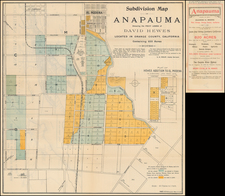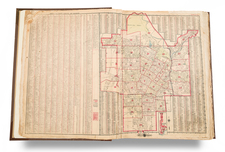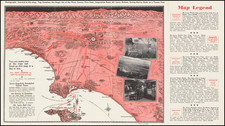Promoting Lomita Farms, circa 1909
Rare separately published broadside map, promoting Lomita Farms, on Los Angeles Interurban Railrway route between LA and San Pedro, circa 1909.
This map offers a meticulous depiction this new subdivision, serviced by he burgeoning transit routes pivotal to the development of Southern California. Distributed by W. I. Hollingsworth & Co., this map delineates Lomita Farms' proximity to the electric railway network, which played an essential role in the urban expansion and suburbanization of Los Angeles County during the early 20th century.
A product of the industrial age, the map underscores the integral connection between transportation infrastructure and urban development. The highlighted portion of the Los Angeles area emphasizes the growth corridors powered by the electric railways. These transit lines not only facilitated the movement of people but also the dissemination of agricultural and industrial goods, contributing to the region’s economic vigor.
The Lomita community, prominently advertised here, represents a microcosm of the larger economic and social changes sweeping across the region. First promoted by Hollingsworth & Co. in a 1908 Los Angeles Times advertisement, Lomita Farms was envisaged as an idyllic blend of suburban living and agricultural opportunity, mirroring the national trend towards decentralized urban environments.
Lomita is promoted as a community of:
21 - 2, 5 and 10-acre Villa-Home and Small Farm and Fruit Tract-Water Piped Throughout for Irrigation and Domestic Purposes-Choice Truck Garden Soil-High-Class Home Surroundings-On Interurban Electric at Weston Street-Four Miles from San Pedro; Four Miles from Redondo, and Six Miles from Long Beach-$350 per Acre, Easy Terms.
W.I. Hollingworth is one of the early real estate speculators in California. In his heyday, he was one of the members of the so-called "Million Dollar Pool," which included Hollingsworth, Harry Haldeman, Alvin Frank, Louis Mayer, Henry S. McKay Jr., Joe Toplitsky, and Adolph Ramish, who became involved in the Julian Petroleum Company. As noted in Guinn's A History of California and an Extended History of Los Angeles (1915) at p. 815:
W. I. HOLLINGSWORTH. Among those interested in the development of Southern California during the last twenty-five years, the name of W. I. Hollingsworth should be mentioned.
Mr. Hollingsworth was born in the year 1862, near Lafayette, Tippecanoe county, Ind., his parents being members of the Quaker band who left Manchester, England, in 1662 under the leadership of William Penn and settled in Chester, Pa. Mr. and Mrs. Hollingsworth were married in Lexington, Ky., Mrs. Hollingsworth's maiden name being Hattie G. Hord.
Mr. Hollingsworth came to Los Angeles in the year 1888 and has been active in its development ever since that date. He is president of the firm of W. I. Hollingsworth & Co., real estate operators, and has been interested in many large and successful projects, not only in the city of Los Angeles, but in Southern and Central California. He also has constructed a number of buildings, the best known of which is the Hollingsworth Building, located at the corner of Sixth and Hill streets, which is recognized as being one of the finest office buildings on the Pacific Coast. He has made real estate a study and his judgment in values is recognized everywhere.
Rarity
The map is apparently a unique survival.









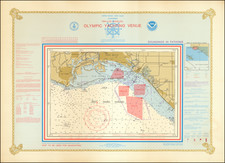
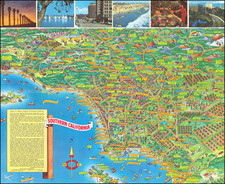
![[ Norma Triangle / West Hollywood / Sunset Strip / Santa Monica Blvd ] Map of West Knoll Los Angeles County, California](https://storage.googleapis.com/raremaps/img/small/97769.jpg)
